Daud Abolade
WorldCuisines: A Massive-Scale Benchmark for Multilingual and Multicultural Visual Question Answering on Global Cuisines
Oct 16, 2024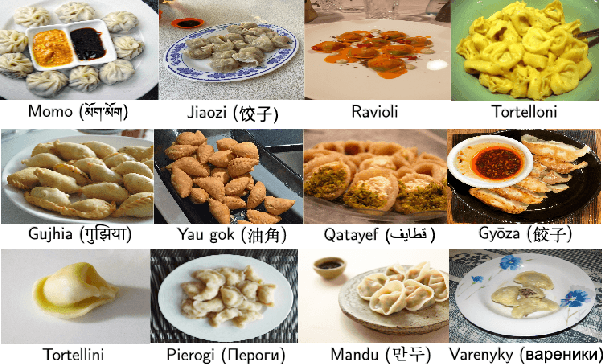

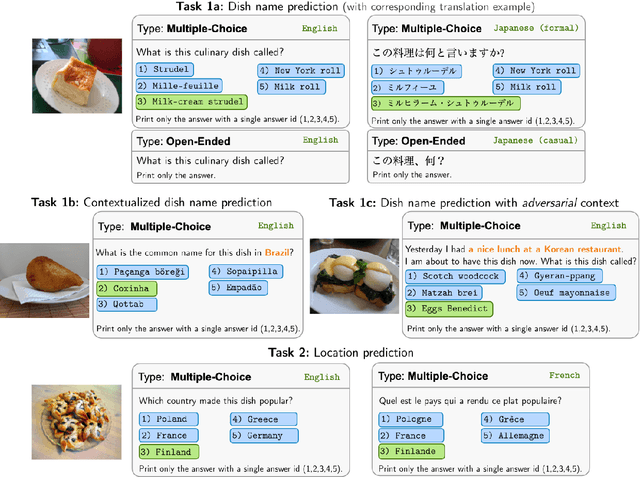

Abstract:Vision Language Models (VLMs) often struggle with culture-specific knowledge, particularly in languages other than English and in underrepresented cultural contexts. To evaluate their understanding of such knowledge, we introduce WorldCuisines, a massive-scale benchmark for multilingual and multicultural, visually grounded language understanding. This benchmark includes a visual question answering (VQA) dataset with text-image pairs across 30 languages and dialects, spanning 9 language families and featuring over 1 million data points, making it the largest multicultural VQA benchmark to date. It includes tasks for identifying dish names and their origins. We provide evaluation datasets in two sizes (12k and 60k instances) alongside a training dataset (1 million instances). Our findings show that while VLMs perform better with correct location context, they struggle with adversarial contexts and predicting specific regional cuisines and languages. To support future research, we release a knowledge base with annotated food entries and images along with the VQA data.
Voices Unheard: NLP Resources and Models for Yorùbá Regional Dialects
Jun 27, 2024Abstract:Yor\`ub\'a an African language with roughly 47 million speakers encompasses a continuum with several dialects. Recent efforts to develop NLP technologies for African languages have focused on their standard dialects, resulting in disparities for dialects and varieties for which there are little to no resources or tools. We take steps towards bridging this gap by introducing a new high-quality parallel text and speech corpus YOR\`ULECT across three domains and four regional Yor\`ub\'a dialects. To develop this corpus, we engaged native speakers, travelling to communities where these dialects are spoken, to collect text and speech data. Using our newly created corpus, we conducted extensive experiments on (text) machine translation, automatic speech recognition, and speech-to-text translation. Our results reveal substantial performance disparities between standard Yor\`ub\'a and the other dialects across all tasks. However, we also show that with dialect-adaptive finetuning, we are able to narrow this gap. We believe our dataset and experimental analysis will contribute greatly to developing NLP tools for Yor\`ub\'a and its dialects, and potentially for other African languages, by improving our understanding of existing challenges and offering a high-quality dataset for further development. We release YOR\`ULECT dataset and models publicly under an open license.
AfriMTE and AfriCOMET: Empowering COMET to Embrace Under-resourced African Languages
Nov 16, 2023
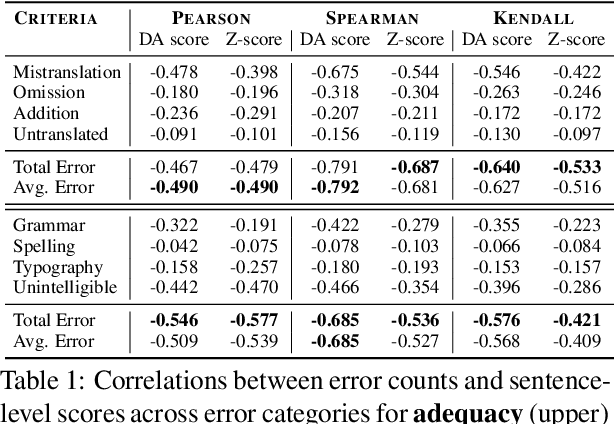
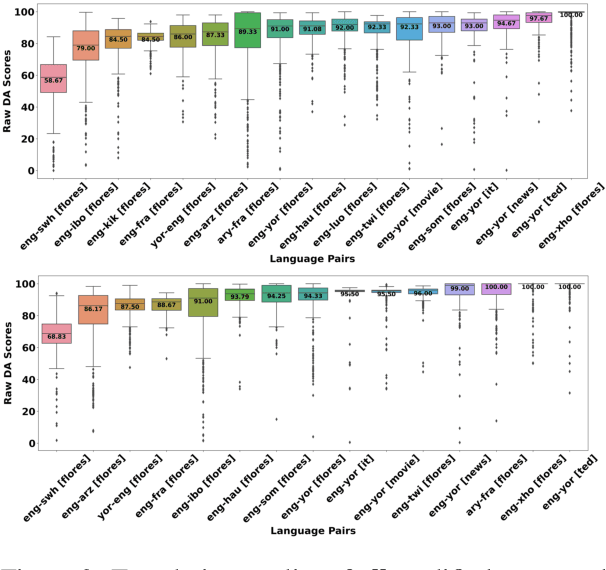
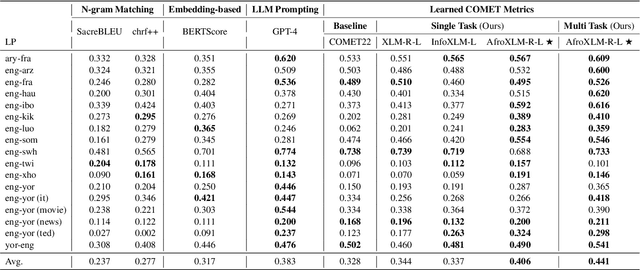
Abstract:Despite the progress we have recorded in scaling multilingual machine translation (MT) models and evaluation data to several under-resourced African languages, it is difficult to measure accurately the progress we have made on these languages because evaluation is often performed on n-gram matching metrics like BLEU that often have worse correlation with human judgments. Embedding-based metrics such as COMET correlate better; however, lack of evaluation data with human ratings for under-resourced languages, complexity of annotation guidelines like Multidimensional Quality Metrics (MQM), and limited language coverage of multilingual encoders have hampered their applicability to African languages. In this paper, we address these challenges by creating high-quality human evaluation data with a simplified MQM guideline for error-span annotation and direct assessment (DA) scoring for 13 typologically diverse African languages. Furthermore, we develop AfriCOMET, a COMET evaluation metric for African languages by leveraging DA training data from high-resource languages and African-centric multilingual encoder (AfroXLM-Roberta) to create the state-of-the-art evaluation metric for African languages MT with respect to Spearman-rank correlation with human judgments (+0.406).
 Add to Chrome
Add to Chrome Add to Firefox
Add to Firefox Add to Edge
Add to Edge